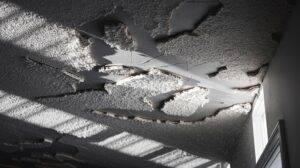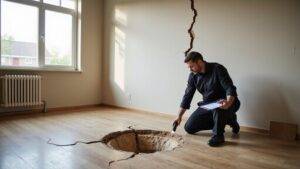Selling a hoarder house may seem impossible. These homes often have piles of clutter, safety issues, and serious cleaning needs. Most buyers see only the mess, not the potential.
This can make sales stressful and lengthy. Buyers worry about hidden damage and the work required. You may feel overwhelmed and unsure where to begin.
Despite these obstacles, you can sell a hoarder house with the right plan and mindset. You need to tackle each problem step by step.
With preparation, you can attract buyers and close the deal. This blog will guide you through each challenge and give you tips to sell your hoarder house successfully.
Key Takeaways
- Clutter and hidden damage reduce buyer interest; clear out debris and repair major issues before listing to improve appeal.
- Health and safety hazards like mold and pests must be professionally addressed early to avoid surprise costs and delays during the sale.
- Emotional attachments and family conflicts can slow decisions; set clear guidelines and prioritize open, solution-focused communication.
- Stigma and low offers are common; use before-and-after photos and highlight renovation potential to attract serious buyers.
- Full disclosure of all known problems with transparent repair records builds buyer trust and helps prevent legal or negotiation setbacks.
Understanding the Unique Challenges of Hoarder Houses
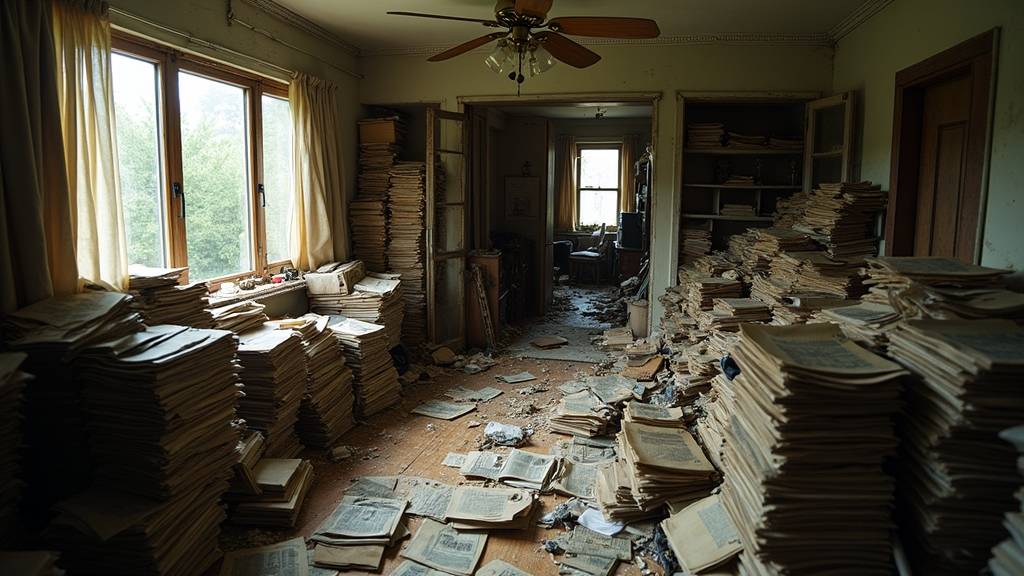
Hoarder houses come with special challenges that make selling harder. These homes often have years of clutter, which can slow the process. Buyers may hesitate due to concerns about the property’s condition.
Emotional attachment can make it tough to let go of a hoarder house. If you are not ready, this can delay decisions and add stress. Sellers should prepare themselves before starting the selling process.
Buyers may ask about the home’s history, especially if hoarding has caused damage. If you provide clear and honest information, it can help ease their concerns. Gathering all documents about repairs or issues is important.
The stigma of hoarding can lower offers and reduce buyer interest. If you address concerns early, you can attract more serious buyers. Being open and prepared can make the sale smoother.
Additionally, considering a selling as-is approach can help streamline the process, as it allows you to sell the property in its current state without extensive repairs or renovations. Understanding the legal disclosure requirements related to hoarding issues also helps prevent future legal complications.
Identifying Health and Safety Hazards
Health and safety hazards are common in hoarder houses. Identifying these dangers is the first step before selling or fixing the property. If you skip this step, you could put yourself and others at risk.
Common hazards include mold, pests, and hidden fire risks. Clutter may hide damaged walls or blocked exits. Overloaded outlets can also cause electrical problems.
You should inspect the house and write down all dangers you find. If you notice unstable piles or blocked paths, mark them clearly. Proper records make it easier to fix the issues.
Workers and visitors must use safety gear like gloves and masks. If you plan to clean or repair, ensure rooms have good airflow. Clearing walkways and securing loose items will help prevent accidents. Proper hazard management reduces the risk of injuries during cleanup and repair efforts.
Managing these hazards properly will help ensure a smoother, faster sale process. If you handle hazards early, the house becomes safer for everyone. Buyers will feel more confident if the risks are managed. Safe homes are also easier to sell.
Navigating Emotional Attachments and Family Dynamics
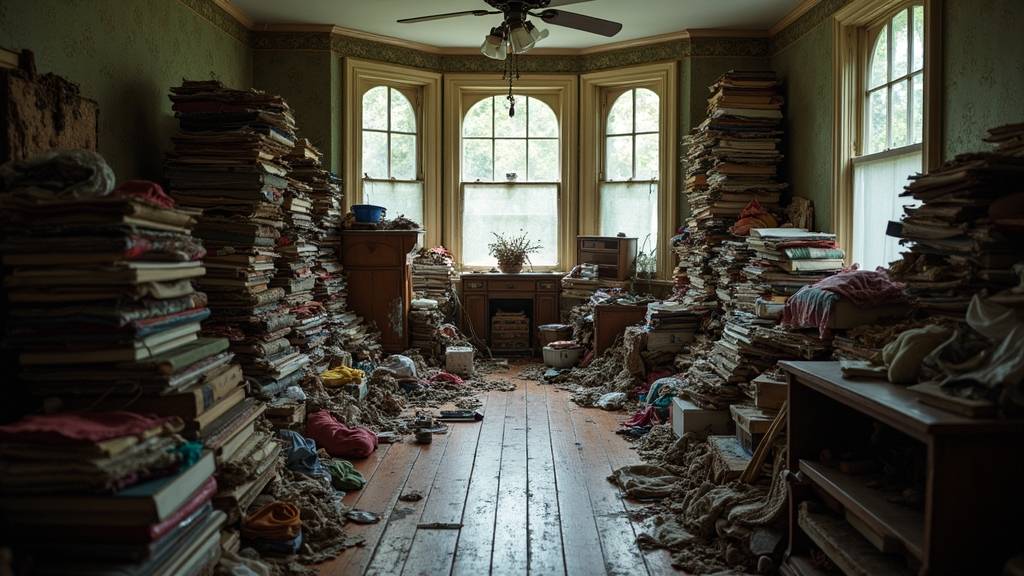
You’ll need to address sentimental belongings as a group, setting clear guidelines to prevent misunderstandings. When family disagreements arise, approach them calmly and prioritize open communication. By staying solution-focused, you can keep the process moving forward and minimize conflict.
Additionally, understanding legal considerations related to property sales can help you navigate any complications that may emerge during the process. Being aware of the local real estate market conditions can also assist you in making informed decisions and avoiding costly pitfalls.
Managing Sentimental Belongings Together
Selling a hoarder house means managing both clutter and emotional items. Sentimental belongings can make the process harder for families. If these items are not handled carefully, disagreements may arise.
Families should talk openly about which items mean the most. Each person can share their feelings and memories. Honest talks help everyone feel included.
Set clear rules for what to keep or give away. If guidelines are made together, decisions become easier and fairer. This can help prevent arguments and delays.
Plan specific times to sort through sentimental things. Taking breaks allows time for reflection without stopping progress. If you work as a team, you can respect memories and move forward.
Handling Family Disagreements Calmly
Family disagreements can happen when sorting a hoarder house. Calm conversations help keep family relationships strong. If everyone listens and stays respectful, problems are easier to solve.
Each family member should share their views. Others must acknowledge these feelings, but keep talks focused on finding solutions. If arguments start, taking a short break can help everyone calm down.
In serious cases, a neutral third party like a counselor can help. This person can guide the family toward agreement. Remind everyone that the main goal is to prepare the house for sale.
If someone stays calm, others may follow their example. Open and respectful talks make it easier to handle emotional items. Cooperation helps the family move forward without losing progress.
Assessing Property Value Accurately
You need to factor in hidden repair costs, as hoarded homes often conceal damage that affects value. Cluttered spaces can distort buyers’ perceptions and make accurate comparisons with market comps challenging. To set the right price, address these obstacles head-on and rely on professional assessments.
Working with trusted local experts who understand the unique challenges of hoarder houses can help ensure an accurate valuation. Additionally, understanding how property valuation is impacted by such conditions can guide you in making informed decisions.
Understanding Hidden Repair Costs
Hidden repair costs in a hoarder house can greatly reduce its value. These costs often stay hidden until the clutter is cleared. Buyers should look past the mess to find the true expenses.
Structural damage may exist under piles of items. Problems like water leaks or cracks in the foundation can go unnoticed. If these issues are found, repair bills can be high.
Electrical and plumbing systems may be outdated or broken. Damaged wires or pipes are often hidden for years. These repairs often cost more if the problems have been ignored.
Mold and pests can spread through walls, floors, or air systems. If infestations are found, fixing them can be expensive. Major cleanups are likely if there has been long-term neglect.
A full inspection is necessary before buying. If you inspect thoroughly, you can make a better budget. Careful checks help you negotiate the price fairly.
Impact of Cluttered Spaces
Clutter in a hoarder house hides the real condition and layout of the property. Rooms packed with items make it hard to see space, features, or maintenance needs. If you want to know the home’s value, you must remove enough clutter to see the property clearly.
Clutter can cover up structural problems and block proper inspections. Appraisers cannot do their job well if rooms are full. If you are attached to the items, you may ignore these issues, but buyers will not.
You should consider hiring professionals to help sort or remove belongings. Clearing space lets you honestly judge the home’s strengths and weaknesses. If you address clutter, you reveal the home’s true market value.
Comparing Market Comps
To find a hoarder house’s value, compare it to similar nearby homes. Online estimates are not enough for this process. Market comps give a clear, fact-based price.
Start by looking at photos and sale prices of homes with similar size and condition. Check if updates or clutter affected their sale price. Record any major differences that might change the value.
If you need help, ask a local real estate agent who knows about homes with issues. The agent can give you an honest opinion. Using these steps helps you set a fair price for the house.
Addressing Structural and Maintenance Issues
Serious structural and maintenance issues often hide under clutter in a hoarder house. You must inspect the property before listing it. Identifying these problems early helps you prioritize necessary repairs.
Common issues include water damage, foundation cracks, HVAC failures, and electrical hazards. Each can lower the home’s value and safety if left unaddressed. If you find these problems, consider professional help for repairs. Water damage, foundation cracks, HVAC failures, and electrical hazards can all reduce a home’s value and pose serious safety risks.
Water damage may lead to mold or rot, which can compromise the home’s integrity and safety. Foundation cracks can weaken the house structure, increasing the risk of collapse. Faulty wiring or HVAC systems may cause safety risks or discomfort. Recognizing hazardous materials such as asbestos or lead paint is crucial for safe handling and disclosure.
Addressing main repairs first keeps maintenance costs under control. You can avoid surprises during buyer inspections by fixing these issues. If you invest in crucial repairs, the house becomes more attractive and easier to sell.
Dealing With Stigma and Buyer Perceptions
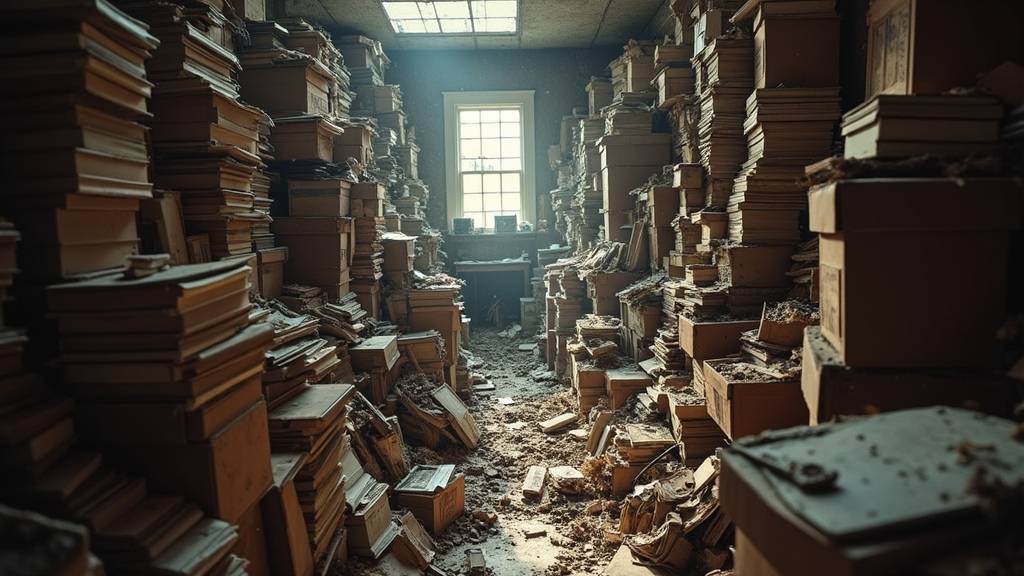
Overcoming the stigma of a hoarder house requires clear communication with buyers. Many buyers worry about cleaning and hidden problems. You must address these concerns directly to help them see the home’s value.
If you use before-and-after photos, buyers can see how much the home has improved. Visual proof helps buyers trust the cleaning process. Pictures also highlight the property’s true potential.
Sellers should provide full details of repairs and cleaning. If you share receipts and service records, buyers may feel more confident. Transparency builds trust and eases doubts.
Buyers might have emotional reactions or concerns. Open conversations can help address their worries. If you listen and respond honestly, buyers may feel more comfortable about the property’s past.
Understanding co-ownership rights and the sale process can also help sellers navigate potential legal complexities when co-owners are involved. Additionally, working with trusted home buyers like Freedom Path Investors can simplify the sale and provide a fair, hassle-free experience.
Deciding Whether to Clean or Sell As-Is
Cleaning a hoarder house before selling can attract more buyers and increase the sale price. If you decide to sell as-is, you will save time and effort but may get less money. Each option has its own set of challenges and benefits. Handling a house in poor condition may require effortless escrow support and specialized knowledge, which a trusted buyer like Freedom Path Investors can provide.
You should think about your financial needs, how quickly you want to sell, and your feelings about the house. If you have a strong emotional connection, cleaning might be harder for you. Additionally, understanding how foundation issues impact the property’s value can help inform your decision. Consider how each choice will affect both your finances and your peace of mind.
Working With Professional Cleaners and Organizers
Hiring professional cleaners and organizers can make cleaning a hoarder house much easier. They know how to handle large amounts of clutter. Their help lets you focus on selling the home. Moreover, they can work efficiently with trusted local service providers to ensure a smooth cleanup process. Professional teams sort, remove, and dispose of items safely.
They use proven methods to clear clutter and restore each room. If there are hidden problems, such as odors or pests, they can address those as well. Cleaners will deep clean surfaces and remove stains. Organizers make sure remaining items look neat and tidy. If you want the home to look its best, their services are a good choice.
Managing Legal and Disclosure Requirements
When you sell a hoarder house, you must meet strict legal and disclosure obligations to avoid future liability. You’ll need to provide accurate information about the property’s condition and understand how local regulations impact your responsibilities. By addressing these requirements upfront, you can protect yourself and streamline the selling process.
Required Seller Disclosures
You must follow the law when selling a hoarder house. Sellers have to share all known problems and hazards. Hiding issues can lead to lawsuits or delays.
Buyers expect honesty about the home’s condition. You should explain all damage, even if it feels uncomfortable. If you need help, talk to a real estate expert or counselor.
Disclose any structural damage, like weakness in the foundation, walls, or roof. Tell buyers about mold, pests, or other dangers caused by clutter. If you did repairs without permits, list them clearly.
Navigating Local Regulations
You must follow local laws when selling a hoarder house. Rules may limit what you can change or fix before selling. If you break these rules, you could face fines or delays.
If the house has unapproved changes, check with your city’s building department. They can tell you if all rooms and additions have the right permits. If some do not, fix the issues or tell buyers about them.
Read your city’s codes to avoid surprises. Unfixed violations can lower your profits or slow down the sale. Handling these legal steps early helps prevent future problems.
Marketing Strategies for Difficult Properties
Marketing strategies help difficult properties sell faster and at better prices. If your property is hard to sell, you need to target the right buyers. Focus on clear presentation and use online tools to reach more people.
You can use before-and-after photos or virtual images to show the home’s potential. Digital marketing puts your property in front of investors or buyers looking for fixer-uppers. Listing on special real estate sites and using social media ads helps you find interested buyers.
Home staging can make key rooms look better, even if you cannot stage the whole house. If you highlight the best features, buyers may see the value. Selective staging in main areas can inspire buyers and improve your chances of a sale.
Choosing the Right Real Estate Agent
You need a skilled real estate agent to sell a hoarder house. The right agent understands the special problems with these homes. If you choose well, your selling process will be smoother.
Some agents have experience with estate planning and inheritance issues. If your home has these challenges, you should ask about their background. Agents who know distressed properties can help more. Look for agents familiar with estate planning and distressed properties if your home comes with inheritance or legal challenges.
Always compare agents before deciding. You can use questions like, “Have you sold hoarder homes before?” or “How will you market this property?” If an agent knows the local area, they may find buyers faster.
If you want the best results, choose an agent with the right skills. Experience, local knowledge, and a strong network are important. If you follow these tips, selling your hoarder house can be less stressful.
Attracting Investors and Cash Buyers
To attract investors and cash buyers, you need to highlight the property’s investment power and make showings as easy as possible. Streamline access so buyers can quickly assess the opportunity, and always disclose the home’s true condition upfront. This approach builds trust and positions your hoarder house as a promising project rather than a hidden risk.
Highlighting Investment Potential
A hoarder house can offer strong investment potential. Investors and cash buyers may see hidden value that regular buyers overlook. If you target these buyers, focus on the property’s transformation possibilities.
You can show before-and-after floor plans to reveal the real layout of the house. These plans help buyers imagine the space after clearing clutter. If buyers see the layout, they can better plan renovations.
Projected resale values can guide investors. Use local sales data to estimate what the home could sell for after repairs. If the numbers are attractive, buyers are more likely to invest.
Estimated renovation timelines are also important. Clear timelines show how storage solutions and decluttering can speed up the process. If the project seems manageable, investors may act quickly.
Streamlining Property Access
Streamlining property access makes it easier for buyers to view the house. Clear walkways and easy entry help attract serious investors. If buyers can enter quickly, they are more likely to consider the property.
Keyless entry systems offer a simple solution. These systems let buyers and inspectors enter without needing a key. If you use keyless entry, scheduling showings becomes much easier.
Removing barriers helps buyers imagine the home’s potential. Quick and simple access can speed up the sales process. If access is easy, buyers can act faster and with more confidence.
Transparent Condition Disclosure
Transparent condition disclosure means telling buyers exactly what problems the house has. Buyers want to know the real condition before making offers. If you are honest, you will attract more serious buyers.
You should show clear photos of every room. Include images that show how clutter is being managed. Visual proof helps buyers understand the work involved.
Provide a written list of all known damage. This should cover structural, electrical, and plumbing issues caused by hoarding. If you do this, buyers will trust your information more.
Share records of any cleaning or repairs already done. If you have helped the seller emotionally, include that too. These details show buyers that action is being taken.
Negotiating Offers and Closing the Sale
Selling a hoarder house requires careful planning during negotiations and closing. Buyers may worry about cleaning costs and repairs. You should address these concerns directly and stay focused on your goals. Careful planning is key when selling a hoarder house, as buyers often worry about cleaning and repair costs.
If you receive a low offer, highlight any upgrades or staging you have done. This can help buyers see the home’s value. Always be prepared to discuss repair estimates if buyers ask.
Emotional support is important if you feel overwhelmed. You can lean on your real estate agent or trusted friends. This helps you make clear decisions.
Review every offer carefully, especially if buyers request credits or concessions. Do not hesitate to negotiate for terms that protect you. If the process feels complicated, consider hiring an experienced agent to guide you.
Moving Forward After the Sale
After the sale closes, you must prepare for your next steps. You should focus on your future, not the property. This will help you handle the transition smoothly.
Emotional detachment is important after selling. If you let go of old attachments, you can move forward with confidence. You will feel more prepared to make clear decisions.
You need to review the final property valuation. If the price met your expectations, you can use the funds as planned. If not, you should adjust your plans.
Reflect on what you learned from the sale. If you gained new insights, use them for future decisions. You can apply these lessons to your next steps.
You should decide how to use the sale proceeds. If you want to reinvest, research your options carefully. If you have other priorities, choose what fits your goals.
Plan your next move with confidence. If you act decisively, you are more likely to reach your new goals. You can move forward with a clear mind.
Conclusion
Selling a hoarder house can be challenging, but a step-by-step plan makes it easier to manage. If sellers stay transparent and work with professionals, they improve their chances for success. Clear communication and highlighting the property’s potential attract more interested buyers.
If you want to avoid lengthy repairs and negotiations, consider selling your hoarder house for cash. We buy houses for cash, making the process fast and less stressful. Sellers can move forward without worrying about cleaning or fixing the property.
If you are ready to sell your hoarder house, we at Freedom Path Investors are here to help. We offer fair cash offers and a quick closing process. Contact us today to see how we can make selling your hoarder house simple and stress-free.





